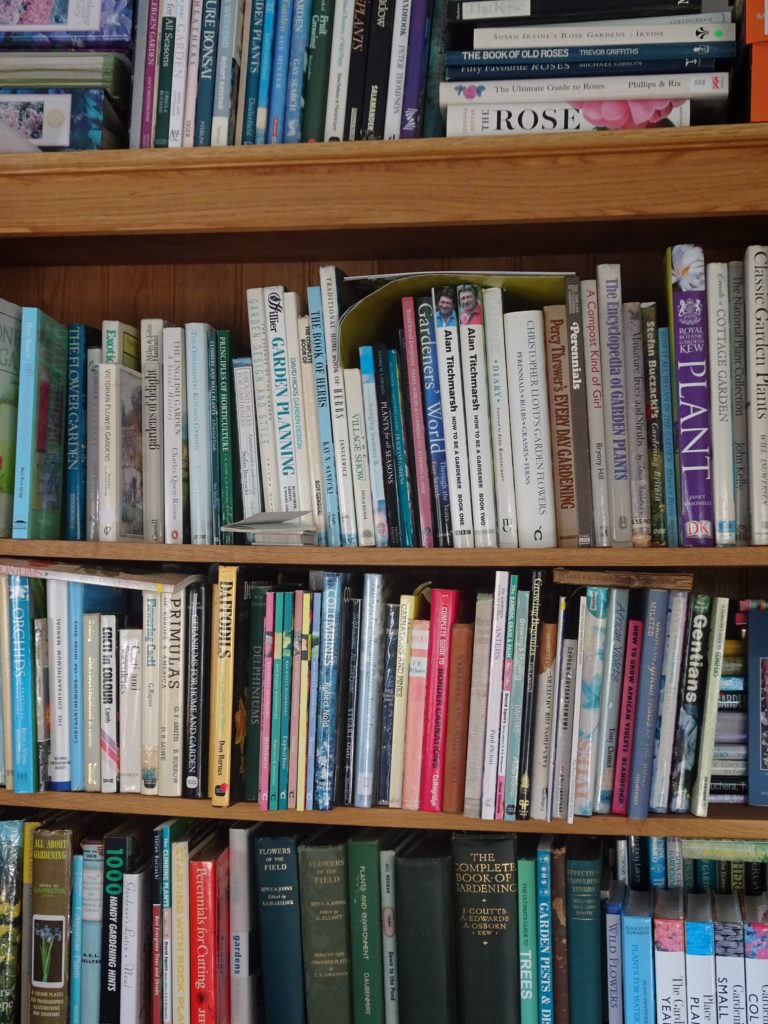My Books on How to Garden

I am almost as keen on books as I am on gardening so it is natural that I should combine the two by collecting books related to gardens and gardening. The attached pdf is a cold list of my current collection by title, authors, publisher and date of publication. The extra columns were for my amusement showing the number of pages ( over 100,000) and a score that I attributed when I first browsed the book. The collection is a bit eclectic as a result of acquiring what was available and affordable at the time augmented by family gifts.
Why Collect Garden Related Books
- A good book with knowledgeable content is priceless as long as I apply the ideas in my own husbandry.
- A good picture is worth a thousand words. Where would we be if we were not seduced by a good picture on a seed packet, plant label, magazine or more importantly inside a book.
- A bit of history goes a long way and all plants and species have their own tale to tell. Keeping old seed catalogues and public garden brochures will remind us how things were. Books about plant hunters and patrons can highlight our social fabric.
- Before the internet and google, knowledge was power and attracted a price for those who shared their know how via books, magazines and radio shows. Much of my collection was produced during of just after WWII when growing larger crops was vital.
- If I was more industrious I would have recorded my books using the Dewy decimal system where all books have a classification number and reference. 580 is generally reserved for Plants with the following subsections
- 575 Science of parts of plants
- 580 Plants
- 581 Specific topics in natural history of plants
- 582 Plants noted for specific vegetative characteristics and flowers
- 583 Magnoliopsida – Dicotyledones
- 584 Liliopsida – Monocotyledones
- 585 Pinophyta – Gymnosperms
- 586 Cryptogamia – Seedless plants
- 587 Pteridophyta -Ferns
- Some 20th century books will become more valuable as evocations of a bygone era. Good writing and art work, first editions and special books by key designers may lead the way.
- One challenge for me has been to find a niche within the published gardening books where I do not currently have any coverage. There are some monographs and old classics where I would like to invest but for the time being I will content my self with a look at planting in accordance to the phases of the moon. This area, also called Biodynamic gardening, is often popular in the press and media at the turn of the year or following blue moons (both of which we have just experienced.)
New Books on Biodynamic Gardening
 Anecdotally biodynamic gardening increases yields with quality, edible crops with a good depth of flavour. Science has not yet proved how this can be measured
Anecdotally biodynamic gardening increases yields with quality, edible crops with a good depth of flavour. Science has not yet proved how this can be measured
These guides have been published annually for over 50 years to help gardeners choose the optimum days for sowing, pruning and harvesting various plants and crops.

Get help from nature – my garden needs all the help it can get and maybe just the sun is not quite enough so I’ll give the moon a go as well.

The moon garden is planted and tended in harmony with phases of the moon to take advantage of gravitational pull on the earth’s water table. Sow when the moon is waxing never plant anything when the moon is waning.
 Expanding into growing beyond the garden is a book that includes tips and ideas on large-scale farming, livestock market gardening. cereal cultivation and commercial vegetable growing.
Expanding into growing beyond the garden is a book that includes tips and ideas on large-scale farming, livestock market gardening. cereal cultivation and commercial vegetable growing.
